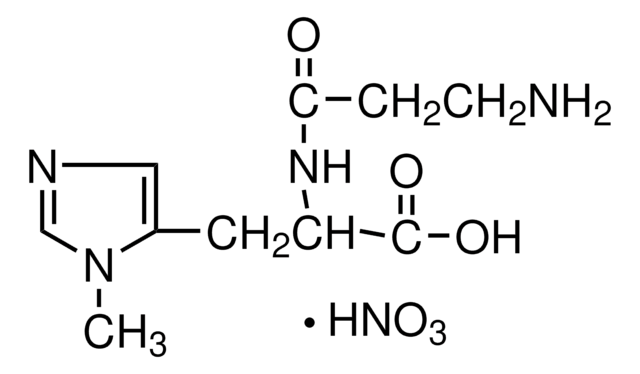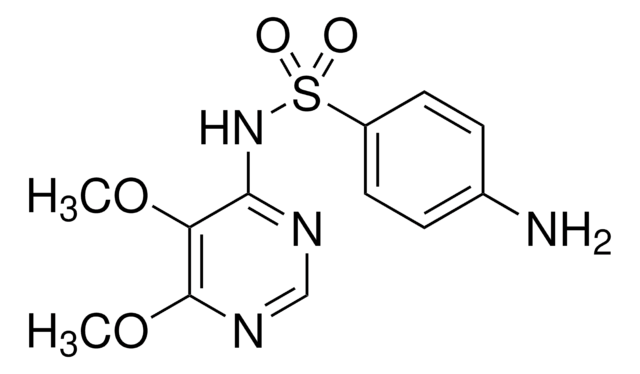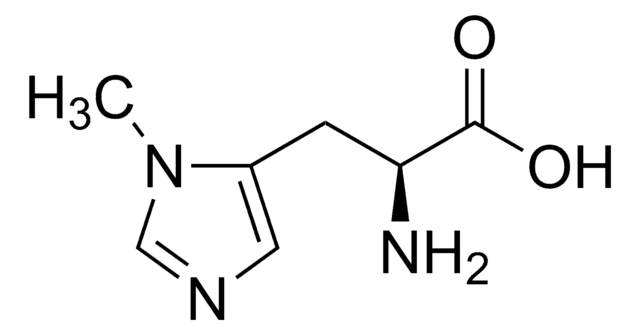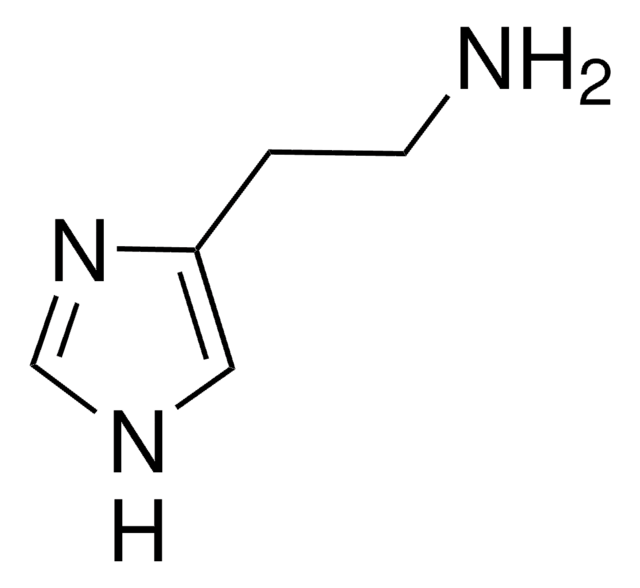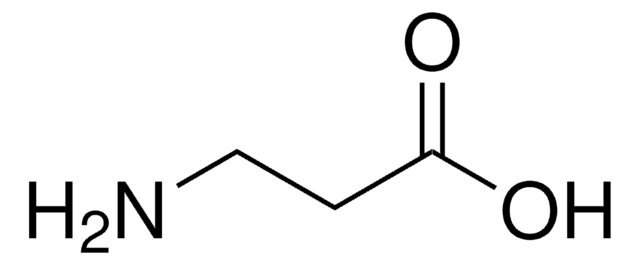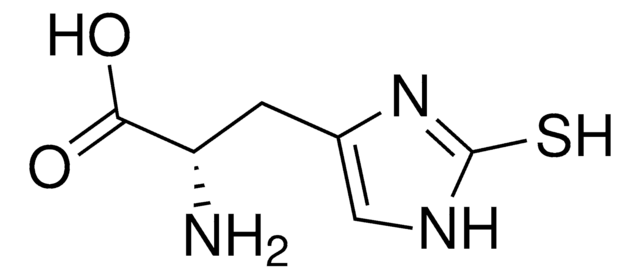C9625
L-Carnosine
~99%
Sinônimo(s):
β-Alanyl-L-histidine
About This Item
Produtos recomendados
Nome do produto
L-Carnosine, ~99%, crystalline
Ensaio
~99%
Formulário
crystalline
cor
white to off-white
pf
253 °C (dec.) (lit.)
aplicação(ões)
cell analysis
temperatura de armazenamento
−20°C
cadeia de caracteres SMILES
NCCC(=O)N[C@@H](Cc1c[nH]cn1)C(O)=O
InChI
1S/C9H14N4O3/c10-2-1-8(14)13-7(9(15)16)3-6-4-11-5-12-6/h4-5,7H,1-3,10H2,(H,11,12)(H,13,14)(H,15,16)/t7-/m0/s1
chave InChI
CQOVPNPJLQNMDC-ZETCQYMHSA-N
Procurando produtos similares? Visita Guia de comparação de produtos
Amino Acid Sequence
Aplicação
Ações bioquímicas/fisiológicas
Código de classe de armazenamento
11 - Combustible Solids
Classe de risco de água (WGK)
WGK 2
Ponto de fulgor (°F)
Not applicable
Ponto de fulgor (°C)
Not applicable
Equipamento de proteção individual
Eyeshields, Gloves, type N95 (US)
Escolha uma das versões mais recentes:
Já possui este produto?
Encontre a documentação dos produtos que você adquiriu recentemente na biblioteca de documentos.
Os clientes também visualizaram
Nossa equipe de cientistas tem experiência em todas as áreas de pesquisa, incluindo Life Sciences, ciência de materiais, síntese química, cromatografia, química analítica e muitas outras.
Entre em contato com a assistência técnica